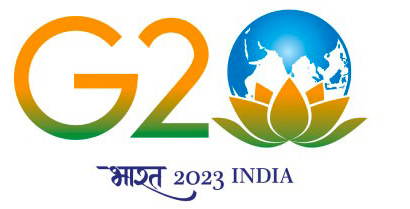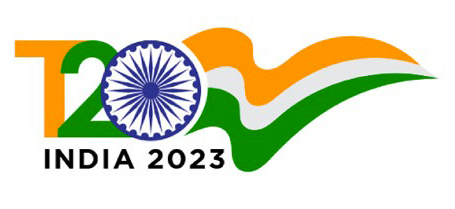Introduction
Human mobility finds mention, even if peripherally, across multilateral forums. Since 2015, the G20 leaders have acknowledged migration in formal declarations and the conversation has evolved to reflect specificities such as remittances, climate refugees, labour market questions, and students. In 2020, the COVID-19 pandemic showed up gaps in migration governance—a lack of data, political will and sensitive action to address the concerns of refugees, migrants, and displaced people. The Bali Declaration (2022) mentioned migrants, especially workers as critical to post-pandemic economic recovery.
However, the issue isn’t anchored within the framework of technology, which has become a significant conversation in all multilateral forums. It is imperative that forums such as G20 approach human mobility in a more holistic manner, contemplating it as a thread across discussions—emanating not just from the Indian G20 presidency but also building bridges around this issue as Brazil and South Africa don the mantle in 2024 and 2025, respectively.
This brief builds a case for embedding conversation on human mobility as a thread across discussions on technology and digital innovation. It establishes the vulnerabilities of human mobility by acknowledging that people on the move interact with all types of digital infrastructure where data is extracted without meaningful consent, accessed and used for surveillance and manipulation and that people’s ability to negotiate for better privacy or participation in decision-making on data collection and use is limited. Data generated through human mobility is, in fact, a core infrastructure for countries that use it to make critical decisions on enabling or disabling movement within and across borders.
Crucially, this piece seeks to establish the need for using human mobility as a lens for digital public infrastructures (DPIs), a mainstay of the Indian G20 presidency.
The centrality of DPIs in India’s G20 presidency
Digital innovation and infrastructure have become a core subject of multilateral engagements. Under Japan’s G7 presidency, the focus is on Data Free Flow with Trust which aims to construct a standard to share and extract value from depersonalised data collaboratively. In 2021, during the Indonesian G20 presidency, a new working group was launched to discuss the implementation of a safe, inclusive, resilient and sustainable digital economy. For India, which took over the G20 presidency in December 2022, an anchoring theme is the idea of DPIs as a lever of economic transformation, financial inclusion, and development. India’s experience of building DPIs, which are open, scalable, foundational digital technologies, has demonstrated that infrastructure built in the public interest can facilitate the movement of people (identity systems), money (payments), and data (data exchanges/registries).
This subject runs as a thread across various tracks and working groups—under the Sherpa Track there is a task force that, along with facilitating discussion on DPIs, is also tasked with identifying global cooperation for shared outcomes; there is also the Think20 Working Group on ‘Our common digital future: Affordable, Accessible, and Inclusive Digital Public Infrastructure’. DPIs also reflect in the discussions of the Development, Digital Economy and Finance Working Groups. It is also being discussed in the context of sectors such as health. DPIs are seen as a huge lever for economic productivity and efficiency and India is keen to showcase this. India also chairs the Global Partnership for AI (GPAI), where it seeks to build cooperation to govern artificial intelligence responsibly, ensure adequate guardrails, and prevent harm—and DPIs will feature significantly here too.
Simultaneously, India has also signed several agreements on migration. The latest is with Germany—a migration and mobility agreement that charts pathways for Indian students to study and work in Germany while fighting irregular migration and trafficking. It commits to setting up a joint working group on migration and mobility. India has similar agreements with the United Kingdom and France.
But these bilateral agreements do not reflect in the DPI agenda of G20, even though the movement of people, payments, and data is a core subject of discussion. This points to a lack of integration across agendas.
Digital as a lens for human mobility
For human mobility, digital infrastructure has become as crucial as physical infrastructure. Labour migrants, refugees, and students all rely on and navigate “digital passages” built by the private sector, governments, and communities. These technologies are used for both facilitating movement and control and surveillance as people enter and exit nation-states. Infrastructure that we understand as DPIs such as Aadhaar in India is denied to Rohingya refugees, which complicates accessing benefits. International and domestic data flows impact migrants’ ability to prove credentials, while also posing the risk of surveillance when data is shared. These data flows are facilitated by digital infrastructures, often public. There is also significant evidence of private sector entities such as Palantir at work, mining data without explicit consent and sharing it with immigration authorities. Government data collation efforts such as Eurodac collect individual biometric information, layer on other information and can then share it with Europol for prevention, detection and investigation of terrorist offences. New systems such as smart borders use drones, sensors, facial recognition technologies and social media to track migrants approaching borders. Human traffickers also use social media to track people’s movement and reach out to potential clients. Technology use is hardly confined to precarious groups such as refugees, migrants and asylum seekers; passage through airports is increasingly surveilled through facial recognition software, for instance, where the compromise of digital rights is significant. Technology misuse is compounded by a lack of data sources on human mobility. The UNHCR has only age information for 56 percent of refugees. This renders invisible the risks and vulnerabilities refugees and migrants face from decision-makers who, in turn, are unable to design responsive policies. Incomplete information also impacts, increasingly, AI-driven decisions which are linked to existing data sets and harbour potential for serious harm as data is not representative.
Yet, technology use, especially from the DPI lens, has also been useful and worth scaling. During the pandemic, India saw an unprecedented movement of internal migrants, and the digital infrastructure made it possible to identify and send income support to ~200 million women in the first week after the lockdown began. India’s vaccine system was built off DIVOC, a digital public good that enabled vaccine access for a billion people even as people moved cities. These experiences have also been seen in Sri Lanka and Togo during the pandemic. Another DPI example is from Ukraine, where an identity system was deployed and recognised by law enforcement agencies in Ukraine, Moldova and Poland to facilitate the movement of people fleeing the war. platform, Trembita, has also been helping reach e-governance services to citizens, even as they move from war-torn parts of the country.
All digital infrastructure impacts human mobility and places people in positions where they are unable to negotiate, irrespective of the type of migration. Tourists with complete paperwork and legal right of passage have to yield biometric data at borders; illegal migrants, using informal modes of entry, have to reckon with experimentative technologies such as smart borders over which they have no control. This needs to be studied and addressed more meaningfully.
A human-centred view of technology is that it should enable the safe movement of people while securing their rights. At no point should technology be used for exploitation or harm—and DPI is significant in hardcoding techno-legal accountability. There is a valuable case for ensuring that the discourse on human mobility uses technology as a lens to understand the vulnerabilities and possibilities inherent in innovations. Appraising the use of DPIs as an instrument in the hands of people can help envision potential innovations that would serve individuals and communities meaningfully.
Integrating agendas, India’s presidency, and beyond
Thus, there are multiple parallel conversations on human mobility—the DPI conversation is focused on the movement of people for state efficiency and private sector innovation; the human mobility discourse is anchored in the safe movement of certain people while preventing that of others. Further, the human mobility community is grappling with understanding technology’s impact on refugees and migrants.
India’s presidency proffers a crucial opportunity to integrate two critical agendas and bring thinking on technology to the human mobility domain, and enable those developing DPI to understand the impact of these technologies on mobility. The focus of India’s DPI agenda is the movement of people, data, and payments—the three issues should serve as a prism for examining the impact on vulnerable populations.
India’s success in integrating technology and human mobility in a comprehensive narrative, and reflecting it in G20 statements, would enable Brazil and South Africa to surface more nuanced viewpoints on the mobility-DPI intersection and add texture based on national contexts. Migration and mobility are political questions, and with the G20 conversations in India taking place in the shadow of the Ukraine conflict, addressing such livewire issues is complex. Yet, G20 is the appropriate forum due to the range and diversity of discussions, member countries’ extraordinary influence, and the group’s increasing focus on technology’s global impact.
India’s initiative could encompass adding fringe events focused on the mobility-DPI intersection to its G20 calendar and liaising with Brazil and South Africa early in their presidencies to build shared pathways.
That the G20 Troika encompasses Indonesia, India, and Brazil, and will soon include South Africa (also a member of IBSA and BRICS), presents an unprecedented opportunity to reframe these multilateral discussions to straddle new questions and build an understanding of technology and human mobility grounded in majority experiences.




